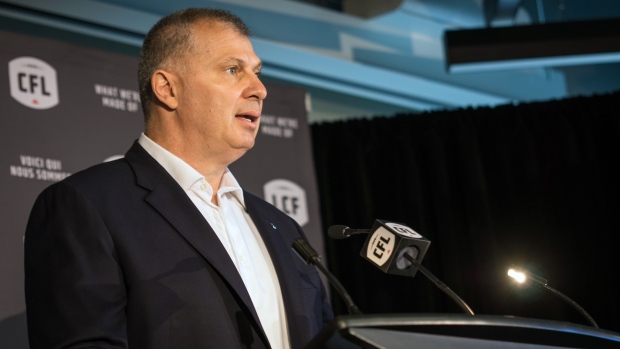Apr 18, 2019
Pro football labour has proven to be one tough sport
The business dynamics of professional football always favour the owners, Dave Naylor writes, so the chances we see a work stoppage in the CFL this season seem extremely low.
By Dave Naylor

While much of the sports world has been firmly focused on the Masters, the NHL and NBA playoffs and the start of the MLB season, some drama has been building late in the Canadian Football League off-season.
This, of course, has to do with the negotiation of a new collective agreement and the tension that ramped up a week ago when, after five weeks of two-day bargaining, the league informed the players its next available bargaining date is April 29 – a mere three weeks before the opening of training camps.
The players immediately viewed this as a stall tactic, intended to turn up the heat on them with the shadow of a season – and their first paycheques – just around the corner.
The players fired back this week, with the union sending communication to its members directing them not to make travel arrangements to attend training camps, which are slated to open the day after the expiration of the CBA (May 19).
As that memo was being received, a good number of players jumped on Twitter to voice their support for solidarity and dismay over a process they see as tilted against them.
All of this reminds us that while pro football is a tough game, pro football labour can be just as nasty. That’s been true in both the NFL and the CFL throughout their respective histories, because while the economies of scale may be different, the dynamics are the same.
There’s a reason there hasn’t been a significant labour stoppage in pro football since the 1987 NFL strike in which owners used “replacement players” and essentially broke the union within a couple of weeks. The last CFL labour action was in the 1970s.
It’s because the business dynamics of professional football always favour the owners.
It begins with the short length of careers in football relative to other sports, with a great number of players lasting less than four seasons. In the CFL, there are many players who last only a season or two.
That, understandably, makes it challenging for players to sacrifice a season, or any part of a season, when they know they may not be around to enjoy the fruits that may come from taking that stand. Since contracts in pro football are not guaranteed, it’s possible a player could commit to sit out a year only to be relieved of his duties when play resumes.
Another factor has to do with the pay scale in football, where a large percentage of salary budgets are spent on a relatively small group of the best players. It’s not just that the disparity between the highest- and lowest-paid players in football tends to be larger than that in other sports; it’s also the large number of players on every team who earn near the bottom of the pay scale.
Add it all up and football doesn’t have much of a middle class, so the spoils of any potential financial gain are never shared equally among the membership. They flow up.
Other factors that work against the players include having the longest off-season of any sport, which translates into the longest stretch in which players aren’t being paid. That’s no small factor in the CFL, where the average salary is around $85,000.
And in the CFL, which is made up of a roughly 50/50 split between Canadians and Americans, interests don't line up on issues like what the mandated number of Canadian players on each team’s roster should be.
Then there are the dynamics of this particular negotiation, which have been kept nearly completely silent but aren’t that hard to read from the outside.
The current CBA talks are taking place against the backdrop of a CFL where revenues are mostly stagnant and a good number of teams lose money – some lots of it, like the Montreal Alouettes, who appear to be in the midst of a distress sale.
There was never going to be a financial windfall for the CFL players this time around.
That isn’t to suggest there aren’t important issues for the players, like injury rehabilitation, greater involvement in decisions on rules and direction of the game, and establishing what the roster breakdown between Canadians, Americans and newly minted Global players will be.
So what are the chances we see a work stoppage this CFL this season? It seems extremely low.
It’s unlikely the players can pressure the owners into spending more money in the current environment, so how willing will they be to sacrifice a paycheque or two for issues that aren’t going to earn most of them an extra nickel in the short term? At some point the reality will hit that players have far more to lose than gain financially by delaying the start of the season, no matter how dissatisfied they might be by what’s been put before them.
That may not be fair, but that is the history of labour in professional football.
This is a different kind of CFL Players’ Association with a different kind of bargaining leadership, better staffed and organized than ever before.
But history is one tough opponent.

